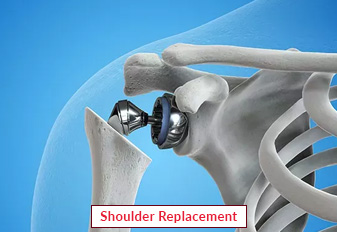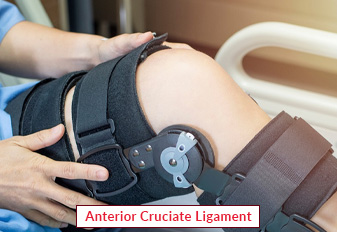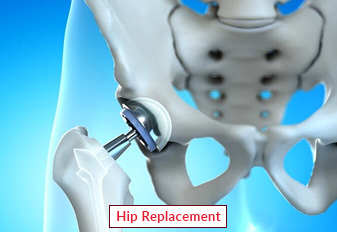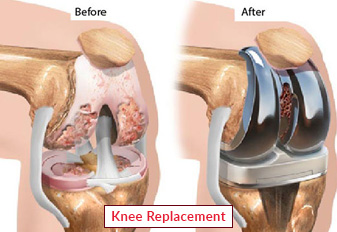Shoulder Replacement Surgery

Shoulder replacement surgery removes damaged areas of bone and replaces them with parts made of metal and plastic (implants). This surgery is called shoulder arthroplasty. The artificial joint is then inserted into the shoulder, consisting of a metal ball attached to a stem that is inserted into the upper arm bone and a plastic socket that is attached to the shoulder blade.
Shoulder implants are available in various shapes and a wide range of sizes. Additionally, replacement options include partial and total using either anatomic or reverse implants.
Book an AppointmentAbout Shoulder Replacement
How Does Shoulder Work?
The shoulder consists of several key components, primarily the humerus (upper arm bone), scapula (shoulder blade), and clavicle (collarbone). These bones are interconnected by ligaments, tendons, and muscles, creating a unique and highly mobile joint.
The primary shoulder joint is the glenohumeral joint, where the rounded head of the humerus fits into the shallow socket of the scapula. This ball-and-socket arrangement permits movements such as flexion, extension, abduction, adduction, internal rotation, and external rotation. The shoulder's remarkable mobility comes at the cost of stability, as it is less constrained than other joints.
Benefits of Shoulder Replacement
Shoulder replacement surgery, or shoulder arthroplasty, offers a range of benefits for individuals suffering from severe shoulder joint pain and dysfunction, often because of conditions such as osteoarthritis or rheumatoid arthritis.
Here are six key benefits of this surgical procedure:
1. Pain Relief: The most immediate and significant benefit of shoulder replacement is the relief from chronic shoulder pain. This can eliminate discomfort and inflammation, allowing individuals to regain their quality of life.
2. Improved Mobility: Shoulder pain can severely limit mobility, making simple tasks like lifting objects, reaching overhead, or dressing painful and challenging. Shoulder replacement surgery restores proper joint function, providing enhanced range of motion and improved overall mobility.
3. Enhanced Quality of Life: With pain and mobility issues resolved, patients experience a substantial improvement in their overall quality of life. They can once again engage in activities that may have been compromised due to shoulder pain, such as sports, hobbies, or daily tasks.
4. Customized Solutions: Shoulder replacement surgery can be tailored to each patient's unique needs and goals. The procedure can address specific shoulder conditions and deformities, providing personalized care.
5. Longevity and Durability: While shoulder replacements are not permanent, modern artificial joint components are designed to last for many years. Patients often experience 15-20 years or more of use from their shoulder implants, allowing for long-term benefits.
Procedure of Shoulder Replacement
Shoulder replacement surgery, also known as shoulder arthroplasty, is a procedure performed to alleviate pain and restore function in a damaged or arthritic shoulder joint. It involves replacing the damaged parts of the shoulder with artificial components. Here's an overview of the procedure in eight key points:
-
Patient Evaluation: Prior to surgery, patients undergo a thorough evaluation that includes a review of their medical history, physical examination, and diagnostic imaging (X-rays, CT scans, or MRIs) to assess the condition of the shoulder joint.
-
Anesthesia: Shoulder replacement surgery is typically performed under general anesthesia, which ensures that the patient is unconscious and does not experience pain during the procedure.
-
Incision: The surgeon makes an incision over the shoulder joint to access the damaged area. The size and location of the incision may vary depending on the specific type of shoulder replacement being performed.
-
Bone Preparation: The damaged or arthritic bone and cartilage within the shoulder joint are carefully removed, creating a clean and suitable area for the artificial components.
-
Implant Placement: The artificial components, which can be made of metal, plastic, or ceramic materials, are implanted. These components typically include a humeral component that replaces the head of the upper arm bone (humerus) and a glenoid component that replaces the shoulder socket (glenoid).
-
Stability Testing: After implant placement, the surgeon tests the stability and alignment of the shoulder joint to ensure that it functions correctly. Adjustments are made if necessary to optimize joint stability.
-
Closure and Recovery: Once the artificial joint is secure and the joint functions properly, the surgeon closes the incision with sutures or staples and covers it with a sterile dressing. The patient is then moved to a recovery area to awaken from anesthesia.
Require Assistance?
Get A Quick Callback From Our Healthcare Experts
Other Specilities We Cover

Anterior Cruciate Ligament (ACL)

Hip Replacement




